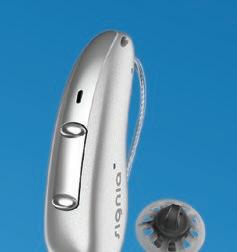
Bill Kelley, of Herron, shows off an award he received from the U.S. Department of Transportation and a photo of his plane. Kelley has been a pilot since 1966 and still enjoys flying his plane today.
Story on page 2


Bill Kelley, of Herron, shows off an award he received from the U.S. Department of Transportation and a photo of his plane. Kelley has been a pilot since 1966 and still enjoys flying his plane today.
Story on page 2
 By STEVE SCHULWITZ News Staff Writer
By STEVE SCHULWITZ News Staff Writer
ALPENA — Bill Kelley says the feeling he gets when he pilots his airplane is one he can’t explain and one he doesn’t get from doing anything else.
Kelley has been a pilot since 1966 and still enjoys taking the controls of his aircraft and darting around the country. Although he doesn’t make as many trips as he used to, he said the thrill of flying and being on top of the world will never escape him.
“When you get above the Earth, you get up there at 3,000 feet, there is a time when you look down and see how things are connected,” he said. “Seeing the way things are laid out and connected from above, from the cities to the fields, mountains, and forests it looks like a giant mural. It is enough to make a person believe in God.”
Kelley said as a boy, he used to watch the military pilots train in the sky above his home in Herron. He said the pilots would practice their dogfighting maneuvers and
wonder what it would be like to fly.
Kelley, who is a former teacher, said he held onto that wonder until a day in 1966 when he ended his day at school and decided to pursue flying lessons.
“I drove right from the school to the airport and I signed up and eventually became a licensed pilot,” he said. “I had never flown at all until I went up with my instructor for the first time.”
Over the years, Kelley said he has made several trips to and from Alaska and has taken off and landed in every state west of the Mississippi River, except California. He has a hangar for his plane at his farm and a half-mile grass runway.
Kelley said much has changed over the decades in terms of aviation technology and flying procedures. He said in the 1960s, he used a radio that only had five channels, and the modern navigation systems on many planes today were nothing more than science fiction. Kelley said the classes, training, and testing are more rigorous now.
“I started out with a little book that had everything I needed,” Kelley said. “My little radio only had five channels, but now you have to have 760 channels, minimum, to be legal. Then the navigation systems are so complex. I liked it better when things were simpler. I still have all of my charts covering almost every part of this country.”
Kelley said although most of the flights were seamless, he has experienced his share of heavy turbulence, thunderstorms, and other dangers in the air. He said there was one flight however that still makes him
emotional today because he said he could have died.
Kelley said he was en route to Grangeville, Idaho from Boulder, Colo., and cruising above the clouds in mountainous terrain. He knew the cloud cover extended well below him and he was unsure if he had enough clear airspace between the mountain tops and the clouds to safely descend. He said in those days, there weren’t 24-hour navigation employees at airports and he was unable to reach help for assistance. He said he put his faith in God and decided to lower his altitude and hope he didn’t crash into a mountainside.
“There were clouds a mile below me and I didn’t know how deep they were. I was flying at 12,500 feet and the mountain peaks were at about 7,500 feet,” he said. “So I didn’t have much room. I knew I had to descend and I did, but I experienced vertigo three times. It is a good thing I was on course because I could have crashed into the mountain. God was on my shoulder that day with me. It is still hard for me to talk about.”
Over half of a century, Kelley has always made safety his top priority, whether he was flying alone or with passengers. He was honored with a plaque from the U.S. Department of Transportation for his safety record and contributions to the airline industry.
Even though Kelley doesn’t use his planes for long flights much anymore, he purchased a camper and he travels around the country with it. He said he no longer has to consider the weather and locations of airports when making his travel plans. That, he said, is nice, but he added that he has no plan to stop flying.
“It is just something I can’t get out of my system,” he said. “It is one of my passions and the feeling it gives me can’t be replaced by anything else.”


(StatePoint) They say, “you can’t buy love,” but scammers have figured out a way to exploit it for profit.
Romance scams are at an all-time high and, while victims cross all demographics, the Federal Trade Commission (FTC) reports that elders are increasingly targeted. Why? Because they often have retirement savings at their disposal and may be more be isolated and less tech savvy.
“Romance scammers often manipulate emotions to gain trust,” says Mark Kwapiszeski, head of enterprise fraud for PNC. “Those who fall victim end up putting feelings above logic. This can create embarrassment and, as a result, these crimes are less likely to be reported.”
Scammers will create convincing profiles on dating and social media apps, reaching out to their target feigning familiarity or attraction. Things move quickly, but there is always a reason they can’t meet on video or in person. They may claim to have a reason that requires them to be overseas or out of reach. They tell their target everything they want to hear, and the hook is set.
Suddenly, a crisis arises that they insist they need help financial help with to mitigate. Or maybe they need finances to set up a new life together. They ask for the money, but would prefer it be sent in a form like cryptocurrency or gift card where there is little chance of the victim ever recovering it.
Such scams are highly effective. In 2022 alone, romance scams resulted in $1.3 billion lost, more than double the money lost in the previous year, according to the FTC.
To add insult to injury, scammers may convince their target to send them revealing photos they will later use to extort them. They may even play the long game and build trust over time, then convince their target to invest with them, without the victim ever getting any return.
“A romance scammer can invest a long time in cultivating trust, which makes these scams par-


ticularly nefarious,” Kwapiszeski says.
To protect against potential romance scams, follow these tips:
• Before sending money or sharing financial information, consult a friend or family member. Simply talking to someone not involved in the situation is often enough to identify red flags.
• Trust your gut. If something seems too good to be true, it probably is.
• Beware of “love bombing,” when a person lavishes you with excessive flattery, affection and praise early in the relationship to manipulate your emotions.
• Be wary of strangers reaching out on social media.
• If you like someone, ask for a quick video chat. If they refuse or make up outlandish excuses, that’s a red flag.
• Stay alert to photos or biographical details that don’t match up with what someone’s told you.
• Use image and name-reverse searches to validate the identity of people you meet online.
• Never send intimate photos to strangers or invest without doing your due diligence.
• Confide in family and friends if you grow suspicious.
Elders have lost homes, emptied out retirement accounts and risked lifetime savings for a love interest that never truly existed. Once the shock abates and the money is gone, the shame sets in and some have even resorted to self-harm instead of admitting to being defrauded in this way. If a loved one falls victim to a romance scam, it’s important to respond with empathy.
If you believe you or someone you love has been a victim of fraud, PNC Bank’s web resources, as part of its Security and Privacy Center (pnc. com), can help. After taking immediate measures to protect yourself, block the scammer on all accounts, change your passwords, and report the incident to the FTC and FBI.
The best line of defense against romance scams is awareness. Understanding common tactics can help you stay protected.








(StatePoint) Maintaining your health and vitality as you age includes taking care of your mouth. Neglecting dental health can make you susceptible to gum disease, lead to poor nutrition, put you at risk for infections, and even impact your emotional well-being.
Yet, many older adults aren’t receiving proper oral care. Research from the Kaiser Family Foundation shows that more than one in five Medicare beneficiaries have not visited a dentist in five years, primarily because of cost.
Many people lose their dental coverage when they retire. Fortunately, affordable options are available, according to Dr. J.B. Sobel, chief medical officer with
Cigna Healthcare’s Medicare business.
“While Original Medicare doesn’t cover routine dental care, Medicare Advantage (MA) plans include everything in Original Medicare and more,” Sobel said. “Many MA plans include some dental coverage, often at no extra cost. Some plans will allow you to see any provider of your choosing, while others require you to use providers within a certain network. Some MA plans even provide nocost transportation to the dentist.”
Once you have access to dental care, there are compelling reasons to take advantage of it, according to Dr. Cary Sun, chief dental officer with Cigna Dental and Vision, including the following:

Preventing gum disease and other oral health issues. Forgoing recommended routine teeth cleanings can increase the risk for cavities, gum disease, infection, and swelling of the gums (gingivitis). This can escalate into problems like tooth loss and the need for root canals or crowns, costing thousands of dollars. If you have a chronic medical condition like diabetes, gum disease can also put you at greater risk of infection, as bacteria can enter the bloodstream through poor oral hygiene. Therefore, it’s important to get regular cleanings with your dentist, to brush your teeth twice daily with a fluoride toothpaste, and to floss daily to remove plaque from between teeth. An electric toothbrush or water flosser may make brushing and flossing easier.
Addressing dry mouth. Many older adults take multiple medications. This can result in a condition called “dry mouth,” which can make it hard to chew, swallow or even talk. Dry mouth can also raise the risk of tooth decay and oral infections. A dentist can help you address this with saliva substitutes or lifestyle changes, such as sipping water and reducing or avoiding tobacco, caffeine and alcohol.
Facilitating good nutrition. Proper nutrition is important for everyone, but particularly for older adults. A healthy
mouth makes it easier for you to eat well and enjoy food, while gum disease or illfitting dentures can make it hard to chew. If you’re having difficulty eating for any reason, your dentist may be able to help you.
Screening for certain cancers. Cancers of the mouth are more common in older adults. As with all cancers, early detection is critical to effective treatment. An annual oral cancer examination can help detect early signs.
Maintaining your confidence. Having healthy teeth boosts confidence and fosters better communication. You may be more likely to go out, stay active, and meet and interact with new people when you’re proud of your smile.
To find MA plans offered in your area, visit Medicare.gov. For information on Cigna Healthcare plans, go to CignaMedicareInformation.com.
“The case for maintaining your dental health is clear and convincing,” Dr. Sun said. “Once you’re covered by Medicare, secure dental insurance coverage and see your dentist as recommended to maintain your overall health. Through regular preventive care, you may even be able to avoid more costly and serious procedures later. It’s never too late to get started on a path toward better oral hygiene.”

(StatePoint) Most people have a foot or ankle problem at one time or another. So how do you know when to seek help?
Many symptoms—even those you can tolerate—require the professional attention of a foot and ankle surgeon to keep the underlying condition from worsening. According to Danielle Butto, DPM, FACFAS, a board-certified foot and ankle surgeon and a Fellow Member of the American College of Foot and Ankle Surgeons (ACFAS), “It’s important to remember that foot health is an important part of your overall health. You need to take care of your feet, which includes going to the doctor when you have pain, sustain an injury or develop a condition needing professional evaluation and treatment.”

ankle surgeon should be part of your holistic diabetes treatment plan. The doctor can screen for the loss of protective sensations in the feet, as well as diagnose and treat any structural issues leading to ulcers and wounds. Swelling, temperature and color changes in the feet, and calluses, are all telltale signs an ulcer may be around the corner and warrant a trip to a foot and ankle surgeon.
the reasons falls occur are numerous, painful foot conditions are a contributing factor, as they make it difficult to maintain balance and coordination. Fortunately, many such conditions are treatable. See a foot and ankle surgeon to alleviate pain and reduce your risk of a life-changing fall.
Here are five examples of when you should make an appointment with your foot and ankle surgeon.
1. When you have diabetes: Living with diabetes means being more prone to a variety of conditions that affect the feet, including foot sores and ulcers. At the same time, diabetic nerve damage makes it harder to detect when there’s a problem. Regular visits to a foot and
2. When children experience pain: When it comes to pediatric foot problems, early intervention is key to longterm successful treatment. As a parent, you may find distinguishing between growing pains and injuries or deformities difficult. But foot and ankle surgeons stress that pain isn’t normal and if it lasts more than a few days or is severe enough to limit your child’s walking, it should be evaluated. Foot problems commonly experienced by children include flat feet, ingrown toenails, calcaneal apophysitis and plantar warts.
3. When you’re at risk for falling: Falls have become the leading cause of injury deaths among Americans 65 and older, according to the Centers for Disease Control and Prevention. While
4. When you can benefit from medical advances: A loss of cartilage once meant a loss of functionality. Today, joint reconstruction surgery with cartilage regeneration offers real hope for long-term functionality, nurturing the body’s own ability to heal itself—with a little boost from technology and a knowledgeable surgeon. Likewise, new surgical techniques for ankle arthritis, including arthroscopic ankle surgery, total ankle joint replacements and bone or cartilage replacement, are helping people stay active. Finally, platelet-rich plasma therapy can promote the healing of bones, cartilage, blood vessels, tendons and tissue for many patients, and is associated with easier recovery than traditional treatments. If you suffer from a foot and ankle ailment, ask your healthcare provider about gamechanging medical advances.
5. When pain is sidelining you: It’s
important for athletes and fitness enthusiasts to rest and recover rather than push through foot and ankle pain caused by an overuse injury. If the pain doesn’t improve in three to seven days however, it’s time to see a foot and ankle surgeon for evaluation and treatment. With the highest level of education, training and board certification, foot and ankle surgeons are the leaders in surgical and non-surgical foot and ankle care. For more information, or to find a foot and ankle surgeon near you, visit FootHealthFacts.org, the patient education website of the American College of Foot and Ankle Surgeons.
Keith Wallace, William Pfeifer
Theodore Johnson


Osteoporosis is a condition that weakens bones weaken to a point of making them brittle. It may only take a small bump or fall for bones affected by osteoporosis to fracture. The National Institute on Aging says osteoporosis is a “silent disease” because people who develop it may not notice any changes until a bone breaks. Typically a hip, spine or wrist are the areas of the body where these fractures occur.

Johns Hopkins Medicine says that 50 percent of women in the United States age 50 or older will break a bone due to osteoporosis, and about 55 million Americans have the condition. Osteoporosis affects women more often than men, particularly because women have lower bone density than men. Loss of estrogen in the later years of life can increase a woman’s risk for osteoporosis. The good news is that osteoporosis is largely preventable, and proper bone health that begins early and lasts throughout life can help.
• Sufficient calcium intake: Women age 50 and younger should consume 1,000 mg of calcium each day (1,200 mg of calcium each day is recommended for women over the age of 51). Calcium can come from foods, beverages and supplements.
• Proper protein intake: Protein also is a necessary nutrient for bone health, says the International Osteoporosis Foundation. Choose lean protein sources.
• Get enough vitamin D: Vitamin D is made in the skin after exposure to the sun, but the average person
does not get enough. Supplementation often is the answer to ensure healthy levels of vitamin D and by eating foods rich in vitamin D, such as eggs, mushrooms and fortified dairy foods or juices.
• Keep active: It is important to engage in regular weight-bearing and muscle-strengthening activities, which also helps to strengthen bones.
• Maintain a healthy weight: Maintaining a healthy weight also is important, as being too thin or having a BMI under 19 is harmful to bone health.
• Prevent falls: Take steps to reduce falls. This includes removing slippery rugs and installing grab bars in the bathroom. In addition, engage in activities that can improve balance, posture and coordination to prevent fall risk.
• Get screened for bone density: A bone mineral density test is a special X-ray capable of detecting bone loss.
Women who are concerned about osteoporosis are urged to speak with their doctors to learn more about prevention and treatment.

(StatePoint) While many Americans have financial concerns about the future, these anxieties are far more prominent among the LGBTQ+ community.
LGBTQ+ adults 60 and older earn less money and have more trouble paying their rent, mortgage, and other expenses than their non-LGBTQ+ peers, according to research from the Leading Age LTSS Center @UMass Boston and the National Council on Aging. SAGE, the world’s largest and oldest organization dedicated to improving the lives of LGBTQ+ elders, reports that 51% of LGBTQ+ elders are very or extremely concerned about simply having enough money to live on, compared to 36% of their non-LGBTQ+ peers.
Economic experts say that this financial security gap is a direct legacy of past governmental policies that put LGBTQ+ adults at a financial

disadvantage, as well as ongoing discrimination that makes it harder for members of this community to secure employment, inclusive healthcare, family support and other fundamentals many take for granted throughout their lives and as they age.
Recent efforts are helping improve outcomes for the most vulnerable members of the community. For example, SAGECents is a digital financial wellness tool created specifically for the estimated 3 million LGBTQ+ Americans currently over 50, to help increase financial stability and reduce economic stress. Launched in 2020, SAGECents is a collaboration between SAGE and LifeCents, a financial wellness technology and consulting firm, with the tool fully funded by the Wells Fargo Foundation.
This groundbreaking program is putting financial wellness into the palm of people’s hands. By creating
a free account, SAGECents assesses each participant’s financial health, giving them much needed insights into their financial lives and a starting point to help them make financial decisions that improve their financial wellbeing. This includes information such as what benefits are available through Medicare, how to create a health proxy and a living will, and tips for increasing credit scores. The app can also pair users with certified, LGBTQ-proficient financial counselors. Nearly 50% of SAGECents participants report saving an average of $571, more than 38% have reduced their debt an average of $591, and 39% have raised their credit score an average of 26 points. To learn more, visit sageusa.org.
“This is the generation that fought at Stonewall, and beyond, for the rights that so many of us enjoy. But sadly, this also is a generation that
faced years of discrimination and underemployment and they are struggling financially in their later years,” says Christina DaCosta, SAGE chief experience officer. “Through the comprehensive resources and tools offered by SAGECents, we aim to empower and support these elders to achieve financial prosperity.”
In addition to widening access to financial tools for individuals, the Wells Fargo Foundation also supports SAGE’s efforts to break down the barriers responsible for this financial security gap, such as advocating against housing discrimination.
“At the root of the financial security gap is systemic discrimination. Tackling those issues is at the heart of our company’s efforts to create a stable financial future for members of the LGBTQ+ community,” says BenJames Brown, Financial Health Philanthropy, Wells Fargo Foundation.



Hear better and live better with Augmented Xperience (AX). Look for it in a full range of Signia hearing aid styles, models and price points.
AX technology delivers speech that sounds clearer and closer to you – speech as it was always meant to be heard.
It’s speech clarity your ears will notice, and it’s only available in Signia hearing aids with AX technology.



To learn more, call us today and schedule your free, no-commitment demonstration! 989-354-4289 *Visit signia-pro.com/en-us/claims-data












